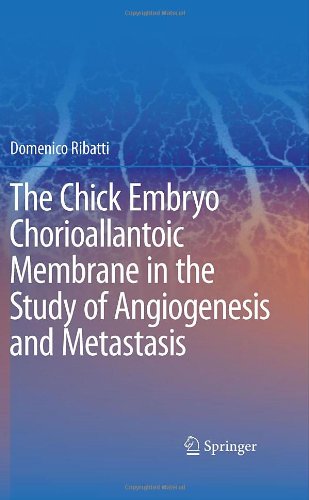

Most ebook files are in PDF format, so you can easily read them using various software such as Foxit Reader or directly on the Google Chrome browser.
Some ebook files are released by publishers in other formats such as .awz, .mobi, .epub, .fb2, etc. You may need to install specific software to read these formats on mobile/PC, such as Calibre.
Please read the tutorial at this link: https://ebookbell.com/faq
We offer FREE conversion to the popular formats you request; however, this may take some time. Therefore, right after payment, please email us, and we will try to provide the service as quickly as possible.
For some exceptional file formats or broken links (if any), please refrain from opening any disputes. Instead, email us first, and we will try to assist within a maximum of 6 hours.
EbookBell Team

4.8
74 reviewsThe chick embryo chorioallantoic membrane (CAM) is an extraembryonic membrane which serves as a gas exchange surface and its function is supported by a dense capillary network. Because of its extensive vascularization and easy accessibility, the CAM has been broadly used to study the morpho-functional aspects of the angiogenesis process in vivo and to investigate the efficacy and mechanisms of action of pro-angiogenic and anti-angiogenic natural and synthetic molecules. The CAM is a suitable site for transplanting tissues, which can survive and develop in the CAM by peripheral anastomoses between graft and original CAM vasculature or by new angiogenic vessels grown from the CAM that invade the graft. While the formation of peripheral anastomoses between host and pre-existing donor vessels is the main, and the most common, mechanism involved in the revascularization of embryonic grafts, the growth of CAM-derived vessels into the graft is only stimulated in tumor grafts. The CAM has long been a favored system for the study of tumor angiogenesis and metastasis, because at this stage the chick immunocompetence system is not fully developed and the conditions for rejection have not been established. Tumors remain avascular for 72 h, after which they are penetrated by new blood vessels and begin a phase of rapid growth. Also, delivery of tumor cells onto the CAM allows the fine study of the effects of tumor derived angiogenic growth factors on blood vessel structure and functionality. The CAM may also used to verify the ability to inhibit the growth of capillaries by implanting tumors onto the CAM and by comparing tumor growth and vascularization with or without the administration of an anti-angiogenic molecule. Other studies using the tumor cells/CAM model have focused on the invasion of the chorionic epithelium and the blood vessels by tumor cells. The cells invade the epithelium and the mesenchymal connective tissue below, where they are found in the form of a dense bed of blood vessels, which is a target for intravasation.